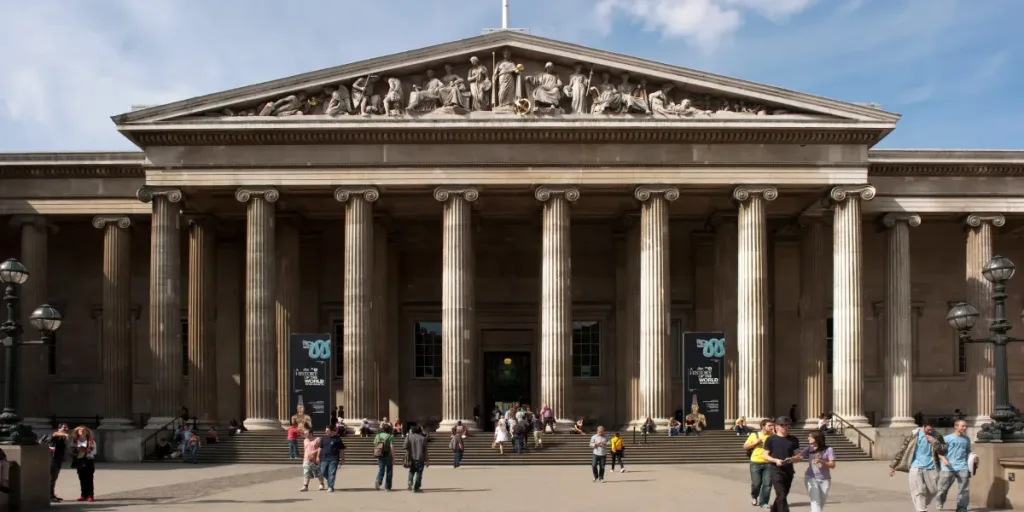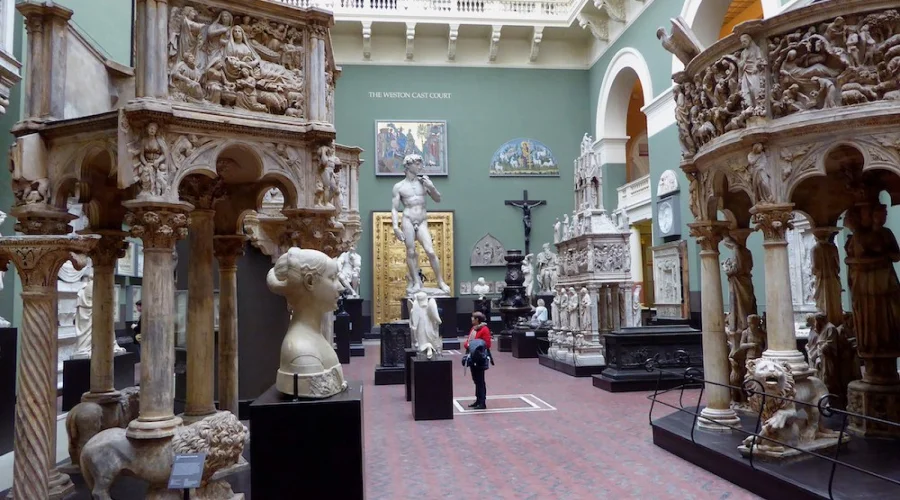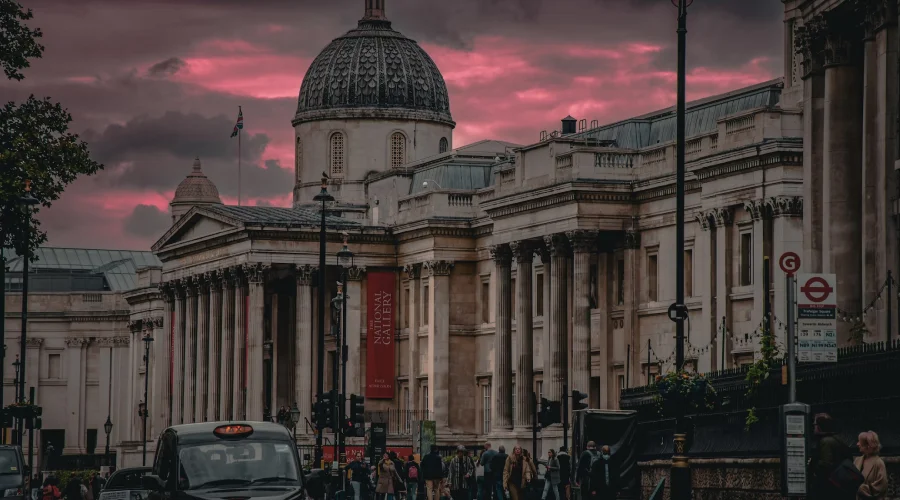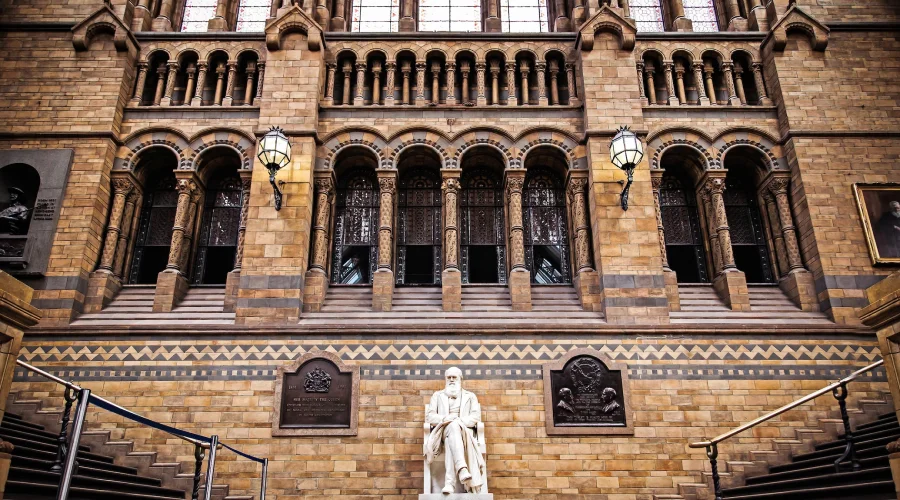Exploring London’s Museums: A Cultural Odyssey

London, the dynamic and multicultural metropolis, is home to some of the world’s most renowned and diverse museums. These institutions house a vast array of art, history, science, and culture, providing a treasure trove of knowledge and experiences for visitors. In this comprehensive report, we embark on a journey through London’s museums, exploring their unique offerings, historical significance, and the rich tapestry of human heritage that they collectively represent.
The British Museum
The British Museum is a global icon, known for its vast and comprehensive collection of art and artifacts from around the world. Founded in 1753, it boasts over eight million items, including the Rosetta Stone, the Elgin Marbles, and the Egyptian mummies. The museum’s dedication to preserving and showcasing the cultural heritage of humanity has made it a must-visit destination for anyone with a passion for history and culture.
Historical Origins of The British Museum
The British Museum’s story begins with the generous bequest of Sir Hans Sloane, a physician and collector, who left his vast collection to the nation upon his death in 1753. The British Museum was subsequently founded to house this collection, and it opened its doors to the public in 1759, marking the beginning of a remarkable journey through the world’s cultural heritage.
The Collection os The British Museum
The British Museum’s collection is a testament to the ceaseless curiosity and dedication of humanity to preserving its history and artistic achievements. The museum boasts over eight million works, with holdings that span the globe, covering continents, cultures, and civilizations. Some of the most renowned pieces include:
- The Rosetta Stone: Perhaps the most famous artifact in the museum, the Rosetta Stone played a pivotal role in deciphering hieroglyphics and unlocking the secrets of ancient Egypt.
- The Elgin Marbles: These sculptures once adorned the Parthenon in Athens and are among the most controversial pieces in the museum, sparking debates about repatriation and cultural ownership.
- The Egyptian Mummies: The British Museum’s Egyptian collection houses an extensive array of mummies, sarcophagi, and funerary artifacts, offering an immersive journey into the afterlife beliefs of the ancient Egyptians.
- The Sutton Hoo Treasure: This collection of Anglo-Saxon burial artifacts, including the famous Sutton Hoo helmet, provides insights into early medieval England.
- The Lewis Chessmen: These whimsical chess pieces from the 12th century, carved from walrus ivory, are a testament to the artistry and craftsmanship of the Viking Age.
- The Parthenon Frieze: This monumental marble sculpture once adorned the Parthenon temple and is celebrated for its depiction of a procession during the Panathenaic festival.
- The Enlightenment Room: This gallery explores the intellectual and philosophical climate of the 18th century, with objects and books that reflect the era’s thirst for knowledge.
Significance of British Museum
The British Museum holds a unique position as a custodian of global heritage. It embodies the notion that cultural treasures are not the exclusive property of one nation but are part of the shared human story. The museum’s commitment to the preservation and presentation of these treasures serves as an enduring source of education and inspiration. It has also contributed to the ongoing debate around cultural heritage and repatriation. The presence of contentious artifacts, such as the Elgin Marbles, has sparked discussions about the rightful ownership and display of cultural objects taken from their places of origin.
Moreover, the British Museum is a vital educational resource. It offers programs, exhibitions, and interactive displays that engage visitors of all ages. The museum’s commitment to accessibility and inclusivity ensures that its treasures can be appreciated by a global audience. The British Museum is not merely a collection of objects but a celebration of human creativity, history, and diversity. It invites visitors to embark on a journey through time, space, and culture, fostering an understanding of the world’s interconnectedness and the enduring legacy of our ancestors. It is a place of wonder and reflection, where one can appreciate the profound impact of human civilization on the world.
A visit to the British Museum is a pilgrimage to the shared heritage of humanity, a tribute to the inquisitiveness of the human spirit, and a celebration of the art, history, and culture that have shaped our world. It remains an enduring symbol of the power of knowledge, curiosity, and the preservation of our collective memory.
The Victoria and Albert Museum (V&A)
The Victoria and Albert Museum, often referred to as the V&A, is the world’s leading museum of art, design, and performance. Established in 1852, it houses a vast collection of over 2.3 million objects, including decorative arts, textiles, fashion, and photography. The V&A is renowned for its diverse exhibitions, which showcase the evolution of design and creativity over centuries.
Historical Origins of V&A
The British Museum’s story begins with the generous bequest of Sir Hans Sloane, a physician and collector, who left his vast collection to the nation upon his death in 1753. The British Museum was subsequently founded to house this collection, and it opened its doors to the public in 1759, marking the beginning of a remarkable journey through the world’s cultural heritage.
The Collection of V&A
The British Museum’s collection is a testament to the ceaseless curiosity and dedication of humanity to preserving its history and artistic achievements. The museum boasts over eight million works, with holdings that span the globe, covering continents, cultures, and civilizations. Some of the most renowned pieces include:
- The Rosetta Stone: Perhaps the most famous artifact in the museum, the Rosetta Stone played a pivotal role in deciphering hieroglyphics and unlocking the secrets of ancient Egypt.
- The Elgin Marbles: These sculptures once adorned the Parthenon in Athens and are among the most controversial pieces in the museum, sparking debates about repatriation and cultural ownership.
- The Egyptian Mummies: The British Museum’s Egyptian collection houses an extensive array of mummies, sarcophagi, and funerary artifacts, offering an immersive journey into the afterlife beliefs of the ancient Egyptians.
- The Sutton Hoo Treasure: This collection of Anglo-Saxon burial artifacts, including the famous Sutton Hoo helmet, provides insights into early medieval England.
- The Lewis Chessmen: These whimsical chess pieces from the 12th century, carved from walrus ivory, are a testament to the artistry and craftsmanship of the Viking Age.
- The Parthenon Frieze: This monumental marble sculpture once adorned the Parthenon temple and is celebrated for its depiction of a procession during the Panathenaic festival.
- The Enlightenment Room: This gallery explores the intellectual and philosophical climate of the 18th century, with objects and books that reflect the era’s thirst for knowledge.
Significance of V&A
The British Museum holds a unique position as a custodian of global heritage. It embodies the notion that cultural treasures are not the exclusive property of one nation but are part of the shared human story. The museum’s commitment to the preservation and presentation of these treasures serves as an enduring source of education and inspiration. It has also contributed to the ongoing debate around cultural heritage and repatriation. The presence of contentious artifacts, such as the Elgin Marbles, has sparked discussions about the rightful ownership and display of cultural objects taken from their places of origin.
Moreover, the British Museum is a vital educational resource. It offers programs, exhibitions, and interactive displays that engage visitors of all ages. The museum’s commitment to accessibility and inclusivity ensures that its treasures can be appreciated by a global audience. The British Museum is not merely a collection of objects but a celebration of human creativity, history, and diversity. It invites visitors to embark on a journey through time, space, and culture, fostering an understanding of the world’s interconnectedness and the enduring legacy of our ancestors. It is a place of wonder and reflection, where one can appreciate the profound impact of human civilization on the world.
A visit to the British Museum is a pilgrimage to the shared heritage of humanity, a tribute to the inquisitiveness of the human spirit, and a celebration of the art, history, and culture that have shaped our world. It remains an enduring symbol of the power of knowledge, curiosity, and the preservation of our collective memory.

The National Gallery
The National Gallery, located in Trafalgar Square, is a paradise for art enthusiasts. Established in 1824, it houses a collection of over 2,300 Western European paintings, spanning from the 13th to the 19th century. The museum features masterpieces by artists such as Leonardo da Vinci, Vincent van Gogh, and J.M.W. Turner, making it a cornerstone of London’s cultural landscape.
Historical Origins of The National Gallery
The National Gallery’s story begins with the establishment of the British Institution for Promoting the Fine Arts in the United Kingdom in 1805. This institution aimed to promote and exhibit contemporary British art. However, a need was felt for a national collection of European paintings accessible to the public, and thus, the National Gallery was founded in 1824. It opened its doors to the public in 1824, making it one of the first public art galleries in the world.
The Collection of The National Gallery
The National Gallery’s collection is an extensive and impressive testament to the evolution of Western European painting. With over 2,300 works, the museum covers art from the 13th to the 19th century, showcasing the talents of master painters across generations. Some of the most renowned artists featured in the collection include:
- Leonardo da Vinci: The museum houses Leonardo’s masterpiece, “The Virgin of the Rocks,” which is celebrated for its exquisite detail and composition.
- Vincent van Gogh: Works like “Sunflowers” and “Chair” are part of the museum’s collection, providing insights into the creative brilliance of this post-impressionist painter.
- J.M.W. Turner: The National Gallery’s collection includes some of Turner’s most celebrated landscapes, reflecting his innovative approach to capturing light and atmosphere.
- Rembrandt: The museum boasts a collection of Rembrandt’s works, including his iconic “Self-Portrait at the Age of 34.”
- Titian: Renowned for his portrait and allegorical works, the National Gallery showcases Titian’s skill and artistry through paintings like “Diana and Actaeon.”
- Monet, Manet, and Degas: Impressionist and post-impressionist works grace the collection, offering a vibrant glimpse into these artistic movements.
Significance of The National Gallery
The National Gallery is more than just an art museum; it is a sanctuary for artistic appreciation and cultural enrichment. It provides a platform for understanding the progression of Western European art, offering visitors a unique opportunity to engage with the works of master painters across centuries. The museum’s commitment to education and accessibility is noteworthy. It offers an array of educational programs, workshops, and guided tours that cater to a diverse audience. The National Gallery’s dedication to making art accessible to all is evident through its efforts to engage visitors of all ages and backgrounds.
The National Gallery is a haven for art lovers, a source of inspiration for artists, and a sanctuary for those who seek to explore the human capacity for creativity and expression. It is a place where time stands still, and the beauty of artistic mastery continues to captivate and inspire generations. The National Gallery is a timeless testament to the power of art and the human capacity for creativity. A visit to the museum is a journey through the evolution of Western European painting, a voyage through the genius of master artists, and an opportunity to connect with the enduring legacy of artistic expression.
The National Gallery encapsulates the essence of human creativity and serves as a tribute to the beauty, diversity, and richness of art. It is not just a museum; it is a sanctuary for the soul, a celebration of our shared cultural heritage, and an invitation to explore the boundless wonders of artistic genius. A visit to the National Gallery is a pilgrimage for art lovers, an exploration of the timeless beauty of human creativity, and an opportunity to embark on a lifelong journey of enlightenment and inspiration.

The Tate Modern and Tate Britain
The Tate Modern and Tate Britain are part of the Tate network of galleries, known for their modern and contemporary art collections. The Tate Modern, situated in a converted power station on the South Bank, boasts works by artists like Picasso, Warhol, and Hockney. Tate Britain, on the other hand, focuses on British art from the 16th century to the present day, with works by Gainsborough, Turner, and Bacon.
Inside The Tate Modern
The Tate Modern, housed in a former power station on the South Bank of the River Thames, stands as one of the world’s most prominent contemporary art museums. It opened its doors in the year 2000 and is renowned for its commitment to modern and contemporary art from around the world.
- Collection and Highlights: The Tate Modern’s collection spans a wide array of artistic movements, featuring works by renowned artists like Pablo Picasso, Salvador Dali, Mark Rothko, and Andy Warhol. It includes art forms such as painting, sculpture, photography, video art, and installations. The museum’s iconic Turbine Hall hosts monumental and innovative installations, changing periodically to showcase the creativity of contemporary artists.
- The Role of the Turbine Hall: The Turbine Hall, at the heart of the Tate Modern, has become a symbol of artistic experimentation and innovation. It features annual site-specific commissions that captivate and challenge visitors, inviting them to engage with the creative process and contemporary art’s ever-evolving nature.
- Temporary Exhibitions and Events: The Tate Modern hosts an array of temporary exhibitions that provide fresh perspectives on contemporary art. These exhibitions offer a dynamic and evolving experience for visitors, highlighting the diversity of the art world.
Inside Tate Britain
Tate Britain, originally known as the National Gallery of British Art, has a history dating back to 1897. It is celebrated as a repository of British art from the 16th century to the present day, offering insights into the evolution of British artistic expression.
- Collection and Highlights: Tate Britain’s collection features works by prominent British artists such as J.M.W. Turner, William Blake, John Constable, and Francis Bacon. The museum showcases a wide range of artistic movements, from the Romantic era to the modernist and contemporary periods. The gallery’s extensive collection of Turner’s works is a significant highlight.
- Historical Context: Tate Britain provides a historical context for British art, allowing visitors to trace the development of British creativity, from the classical and romantic traditions to the radical innovations of contemporary artists.
- The Clore Gallery: The Clore Gallery, an extension of Tate Britain, houses a dedicated collection of J.M.W. Turner’s work, offering an in-depth exploration of the artist’s extraordinary talent and contributions to British art.
Significance of Tate Modern and Tate Britain
The Tate Modern and Tate Britain play critical roles in the appreciation and understanding of art, both in the United Kingdom and on the global stage. The Tate Modern serves as a dynamic platform for contemporary art, showcasing the innovative and ever-evolving nature of artistic expression. It invites visitors to engage with cutting-edge works, offering a space for dialogue, reflection, and exploration. Tate Britain, on the other hand, is a sanctuary for British art, celebrating the legacy of British artists throughout history. It provides valuable insights into the development of British culture and creativity and offers a unique historical perspective.
Both museums are committed to making art accessible to all, with educational programs, workshops, and exhibitions that engage diverse audiences. The Tate Modern and Tate Britain are artistic sanctuaries that celebrate the past, present, and future of art. A visit to these museums is an exploration of the beauty, diversity, and innovation of artistic expression. They are spaces that invite curiosity, reflection, and inspiration, offering a glimpse into the ever-evolving world of art.
The Tate network of galleries is a tribute to human creativity, a celebration of our shared cultural heritage, and an opportunity to explore the boundless wonders of artistic genius. A visit to the Tate Modern and Tate Britain is a pilgrimage for art lovers, an immersion in the timeless beauty of human creativity, and an invitation to embark on a lifelong journey of enlightenment and inspiration.

The Natural History Museum
The Natural History Museum, established in 1881, is a haven for science enthusiasts. Its collection includes over 80 million specimens, ranging from dinosaurs and gemstones to meteorites and rare minerals. The museum’s interactive exhibits and impressive displays make it an educational and entertaining destination for all ages.
Historical Origins of the Natural History Museum
The Natural History Museum’s origins can be traced back to the collection of the British Museum, which included both natural and cultural specimens. However, as the need for a dedicated natural history museum grew, the institution was established in the late 19th century. The stunning Romanesque building that houses the museum is itself a work of art, designed by architect Alfred Waterhouse.
The Collection of the Natural History Museum
The Natural History Museum’s collection is a vast and comprehensive treasure trove that spans the entire spectrum of natural history. With over 80 million specimens, the museum’s holdings include:
- Minerals and Gemstones: The museum houses one of the world’s most extensive collections of minerals and gemstones, featuring dazzling specimens and priceless gems.
- Dinosaurs and Fossils: The museum boasts an impressive array of dinosaur skeletons and fossils, including the renowned Diplodocus cast that greets visitors in the entrance hall.
- Earth Sciences: From meteorites to rare minerals, the museum’s Earth Sciences collection provides insights into the planet’s geological history.
- Botany: The herbarium at the museum contains millions of plant specimens, offering a valuable resource for botanists and researchers.
- Entomology: The entomology collection houses millions of insect specimens, showcasing the world’s incredible insect diversity.
- Zoology: The museum’s zoology collection is a treasure trove of animal specimens, from marine life to terrestrial creatures.
- Human Evolution: Exhibits on human evolution and anthropology provide a fascinating look into our own evolutionary journey.
Significance of the Natural History Museum
The Natural History Museum is more than just a repository of natural wonders; it is an educational and inspirational institution that fosters an understanding of the world’s natural diversity. The museum’s commitment to engaging and immersive displays, along with educational programs and interactive exhibits, ensures that it remains a vibrant and relevant cultural institution.
The institution plays a pivotal role in promoting scientific knowledge and research, offering resources to scientists, students, and researchers from around the world. Its dedication to making science accessible to all is evident through its public engagement programs and initiatives designed for visitors of all backgrounds and age groups. The Natural History Museum is a testament to the marvels of the natural world and the relentless human quest for understanding and appreciation. A visit to the museum is a journey through the incredible diversity of life on Earth, a voyage through the geological history of our planet, and an opportunity to marvel at the mysteries of the cosmos.
The Natural History Museum encapsulates the essence of scientific exploration and serves as a tribute to the beauty, diversity, and richness of the natural world. It is a sanctuary for the curious, a celebration of our shared natural heritage, and an invitation to explore the boundless wonders of the Earth and the cosmos. A visit to the Natural History Museum is a pilgrimage for nature enthusiasts, an exploration of the wonders of our planet, and an opportunity to embark on a lifelong journey of enlightenment and appreciation.

The Science Museum
The Science Museum, founded in 1857, is another of London’s outstanding institutions. It offers a captivating exploration of scientific progress, featuring interactive displays, historical artifacts, and hands-on experiments. From space exploration to the history of computing, the museum covers a broad spectrum of scientific disciplines.
Historical Origins of the Science Museum
The Science Museum’s origins can be traced back to the Great Exhibition of 1851, a showcase of industrial and technological marvels held in the Crystal Palace. Following the success of the exhibition, it was decided to create a dedicated museum to celebrate scientific and technological progress. The museum’s premises, originally located in South Kensington, have since been expanded and renovated to house a vast and diverse collection.
The Collection of the Science Museum
The Science Museum’s collection is an extensive and fascinating repository of human achievement in the realms of science, technology, and innovation. Some of the most remarkable aspects of the collection include:
- Early Scientific Instruments: The museum houses an array of early scientific instruments, including telescopes, microscopes, and astrolabes, which provide insights into the scientific endeavors of previous centuries.
- Transportation: The museum showcases the evolution of transportation, featuring historic locomotives, aircraft, and automobiles that reflect the development of travel and mobility.
- Communication and Computing: From early telegraphy to the birth of computing, the collection offers a journey through the history of communication and technology.
- Space Exploration: The Science Museum celebrates human exploration of space, with exhibits on space exploration, astronaut gear, and the tools of the cosmos.
- Medical Science: The museum provides insights into the evolution of medical science, featuring artifacts and displays that highlight medical advancements and breakthroughs.
- Contemporary Innovations: The Science Museum doesn’t just focus on the past; it offers an engaging look at contemporary innovations, including robotics, artificial intelligence, and emerging technologies.
Significance of the Science Museum
The Science Museum plays a vital role in promoting scientific knowledge, understanding, and inspiration. It provides a platform for educating the public on scientific and technological advancements, fostering a love for exploration and discovery. The museum’s commitment to accessibility is evident through its interactive displays, educational programs, and workshops. It offers a diverse range of exhibitions and events that cater to visitors of all ages, making science and technology accessible and engaging for all.
The institution is a valuable resource for scientific research and education, offering a wealth of resources to students, researchers, and scientists. Its dedication to sharing scientific knowledge and its promotion of scientific literacy are commendable. The Science Museum is not just a repository of scientific knowledge; it is a sanctuary for curiosity and inspiration. A visit to the museum is a journey through the wonders of human ingenuity, a voyage through the history of scientific exploration, and an opportunity to marvel at the limitless possibilities of science and technology.
The Science Museum encapsulates the essence of scientific progress and serves as a tribute to the beauty, diversity, and richness of human innovation. It is not just a museum; it is a sanctuary for the curious, a celebration of our shared scientific heritage, and an invitation to explore the boundless wonders of the natural world and the limitless possibilities of human ingenuity. A visit to the Science Museum is a pilgrimage for science enthusiasts, an exploration of the wonders of the universe, and an opportunity to embark on a lifelong journey of enlightenment and discovery.

The British Library
The British Library is not just a repository of books; it is a testament to the power of words and ideas. Established in 1973, it houses over 200 million items, including manuscripts, books, and historic documents like the Magna Carta and Shakespeare’s First Folio. The library is a pilgrimage site for literature and history enthusiasts.
Historical Origins of the British Library
The British Library’s story is a tale of the evolution of British libraries and their consolidation into a single institution. It traces its roots back to the foundation of the world-famous British Museum in 1753, and the subsequent separation of the library from the museum in 1973 to form the independent British Library.
The Collection of the British Library
The British Library’s collection is a literary and historical tapestry that spans centuries and continents, encompassing an astonishing array of written knowledge. Some of the most remarkable aspects of the collection include:
- Historical Documents: The library houses a wealth of historical documents, including the Magna Carta, the Gutenberg Bible, and Shakespeare’s First Folio.
- Manuscripts: The library boasts a vast collection of manuscripts, with over 150 million items, including medieval illuminated manuscripts and ancient texts.
- Books: The British Library houses a copy of nearly every book published in the United Kingdom and Ireland, making it one of the largest book repositories in the world.
- Maps: The library’s map collection is extensive, featuring historical maps, atlases, and charts that provide insights into the world’s changing landscapes.
- Music: The library holds an extensive collection of musical scores and manuscripts, including the works of renowned composers.
- Rare and Unique Items: The British Library houses unique and rare items, such as the original lyrics of “The Beatles” handwritten by John Lennon.
Significance of the British Library
The British Library is more than just a repository of books; it is a sanctuary for knowledge, a tribute to the power of words, and a celebration of literary, historical, and cultural heritage. It provides a platform for understanding and appreciating the written word’s enduring impact on society. The library’s commitment to accessibility is commendable. It offers educational programs, exhibitions, and events that engage visitors of all ages and backgrounds. The British Library is dedicated to making written knowledge accessible and engaging for all. The institution also plays a vital role in preserving and archiving the United Kingdom’s cultural and intellectual legacy. It offers a valuable resource for scholars, researchers, and students, fostering the pursuit of knowledge and the advancement of research.
The British Library is not just a repository of books and documents; it is a sanctuary for the written word, a celebration of human creativity, and an invitation to explore the limitless possibilities of knowledge. A visit to the library is a journey through the annals of history, a voyage through the evolution of written culture, and an opportunity to connect with the enduring power of literature, language, and the human imagination.
The British Library encapsulates the essence of written knowledge and serves as a tribute to the beauty, diversity, and richness of human creativity. It is not just a library; it is a sanctuary for the curious, a celebration of our shared literary heritage, and an invitation to explore the boundless wonders of human thought and expression. A visit to the British Library is a pilgrimage for book lovers, an immersion in the timeless beauty of the written word, and an opportunity to embark on a lifelong journey of enlightenment and literary discovery.

Conclusion on London Museums
London’s museums are more than just repositories of knowledge; they are living testimonies to the collective heritage and creativity of humanity. Each museum offers a unique perspective on art, history, science, and culture, providing a journey through time and space that transcends boundaries and enriches the mind and spirit. Whether you are a local resident or a curious traveler, London’s museums beckon with open doors, inviting you to explore the boundless wonders they hold within their walls. These institutions not only celebrate human achievement but also serve as bridges that connect us to our shared past and the infinite possibilities of the future. A visit to London’s museums is not merely an excursion; it is a cultural odyssey, a tribute to human endeavor, and an opportunity to embark on a lifelong journey of discovery and enlightenment.








